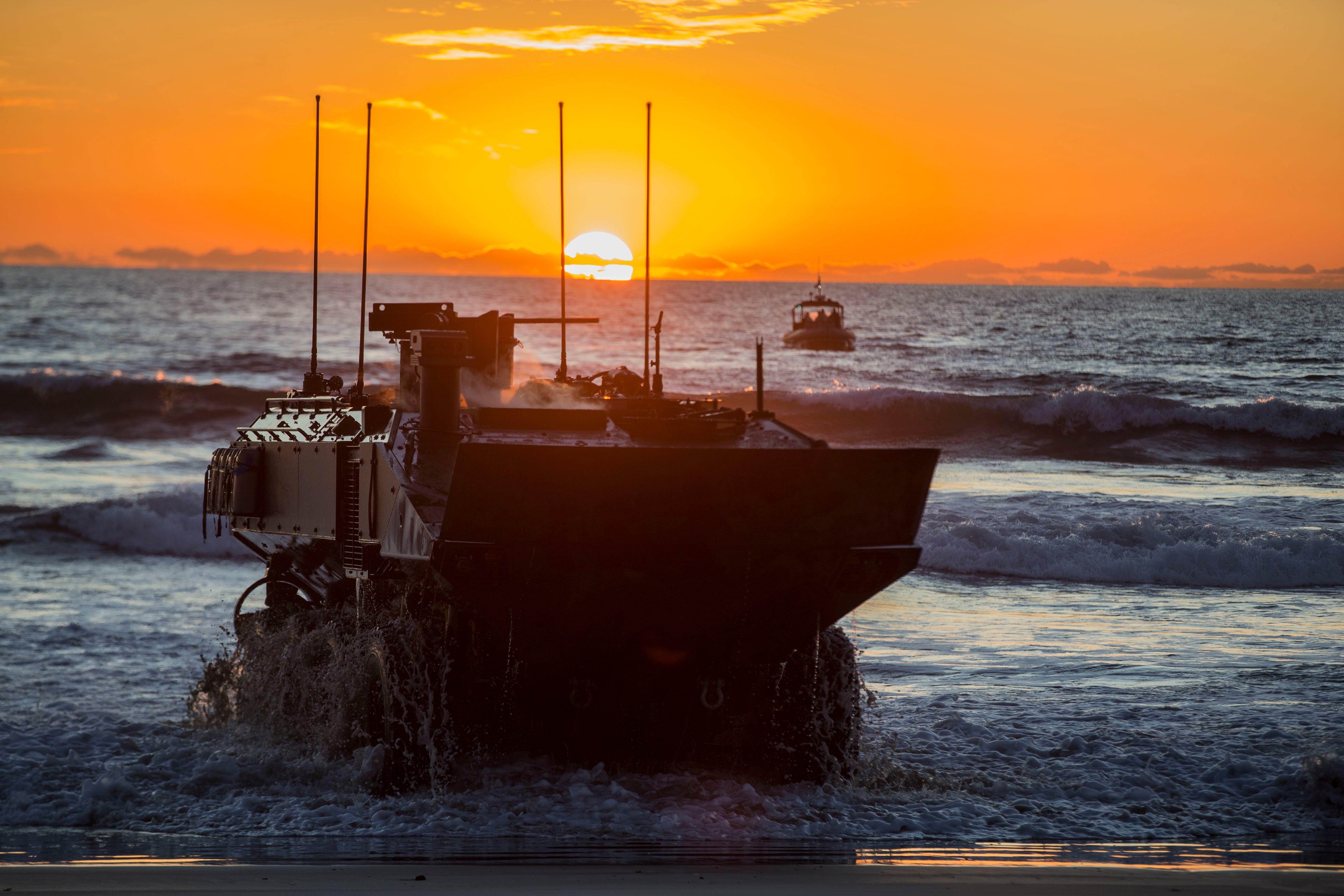
The Marine Corps this week awarded BAE Systems $184 million for 36 additional Amphibious Combat Vehicles, the company announced today.
The award was made as a contract option to the full-rate production contract signed in December. This option brings the total number of vehicles under full-rate production to 72, for a total value of $366 million, according to the news release.
“The exercising of this option validates years of teamwork in partnership with the Marines to provide the most adaptable amphibious vehicle possible to meet their expeditionary needs,” John Swift, BAE Systems’ director of amphibious programs, said in a news release.
“The ACV was designed to meet the Marines’ needs of today while allowing for growth to meet future mission role requirements.”
Two Marine Corps ACV program officials elaborated this week on the ACV fielding effort and how the program can grow to further meet Marine Corps objectives under the service’s Force Design 2030 efforts to reshape the force for peer-adversary competition by the end of the decade.
Maj. Mike Skalicky, the operations officer at the advanced amphibious assault program office, said the ACV personnel variant was being fielded now, with the first platoon on the West Coast already operational. This variant, which will make up the bulk of the ACV fleet, has some command, control, communications, computers and intelligence (C4I) capabilities to enable distributed operations under the Marines’ Littoral Operations in a Contested Environment (LOCE) concept.
Lt. Col. Matt Hohl, assault amphibian capability integration officer at the capabilities development directorate at Marine Corps headquarters, said during the discussion that the personnel variant will also have other priorities for distributed operations under LOCE such as an alternate precision navigation and timing (APNT) system.
The command variant, which is already on contract with BAE Systems, will bring even greater C4I capabilities to the fight, Hohl said, and will have room for growth as the Marine Corps considers adding things like additional surveillance capabilities, electronic warfare tools and counter-EW protection systems.
Hohl, who spoke with Skalicky on a panel at the Defence IQ International Armoured Vehicles Conference on Wednesday, said the electrical, weight and other margin being built into the ACVs could allow for more cameras and sensors or even things like active protection systems to be added later on.
Additionally, the Marine Corps has awarded BAE a contract to start developing a 30mm cannon variant of the ACV, and the service plans to build a recovery variant as well.
Though much attention has been paid to the Expeditionary Advance Base Operations concept – which falls under LOCE and has spurred the Navy and Marine Corps to pursue a Light Amphibious Warship to help move small groups of about 75 Marines around island chains and shorelines – Hohl said during the presentation that the ACV would support traditional Marine expeditionary unit formations operating aboard large amphibious ships as they conduct missions under the broader LOCE concept.
“As it stands right now, the ACV will be forward deployed in our Marine expeditionary units, being able to provide that light protected mobility, amphibious capability, and organic ability to swim from ship to shore or shore to shore with our Marine embarked infantry,” he said. He added that the service is looking at how ACV could contribute to other missions like EABO, but he stressed the importance of the vehicles to the MEUs.
In response to a question from USNI News, Hohl said the priority is to field the ACVs coming off the production line to Pacific units – I Marine Expeditionary Force in California and III MEF in Japan – and then to II MEF in North Carolina later on.
Once all seven MEUs have transitioned from the legacy amphibious assault vehicle to the ACV, additional ACVs will go to Marine divisions so they can train, conduct exercises with allies and partners, and hold some vehicles in reserve in case of contingency operations.
Hohl added that the program office is providing some lethality and communications upgrades to legacy AAVs, to help bridge the gap between now and when all the ACVs are fielded in the late 2020s, ahead of full Force Design implementation in 2030.





